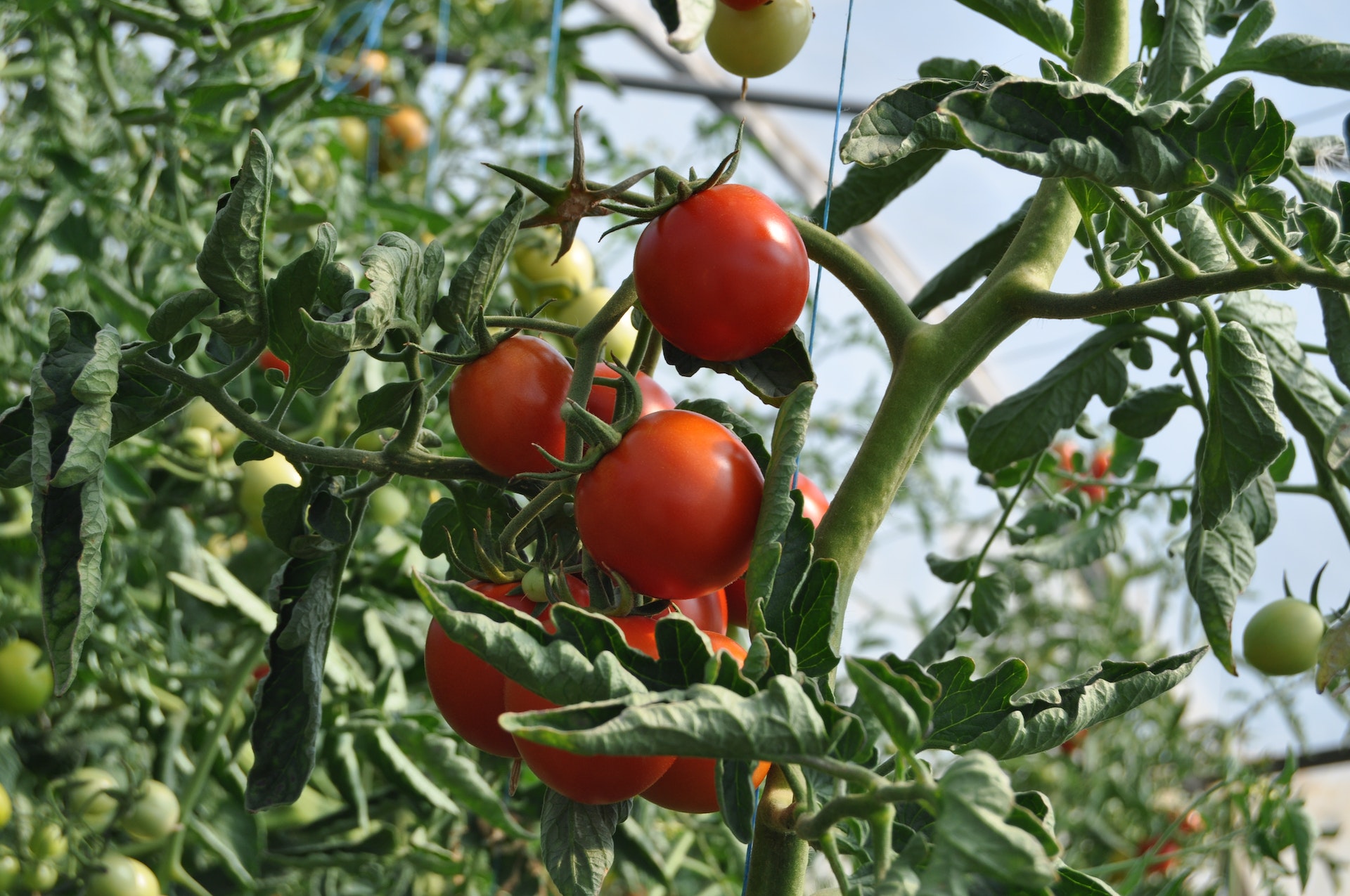Tomatoes are a favorite crop grown by many gardeners for their versatility in the kitchen and ease of cultivation. However, many new gardeners may not realize the importance of a proper water schedule for tomato plants. A good watering schedule can lead to healthy growth and bountiful harvests, while inadequate watering can lead to stunted growth and poor yields. In this blog post, we will provide an overview of the water requirements for tomato plants, discuss the factors to consider when developing a watering schedule, and provide tips for ensuring healthy growth and bountiful yields. We will also cover common watering problems that can affect tomato plants and provide additional tips for healthy plant growth. By following the advice provided in this blog post, gardeners can ensure that their tomato plants thrive and produce a bountiful harvest.
Understanding Water Needs for Tomato Plants
Tomato plants require consistent moisture throughout their growing season, but the amount and frequency of watering will depend on various factors such as temperature, humidity, soil type, and stage of growth. In general, tomato plants require about 1-2 inches of water per week, either from rainfall or irrigation. However, the watering needs may increase during hot and dry weather conditions.
Over-watering or under-watering tomato plants can have negative consequences on their growth and yield. Over-watering can lead to waterlogged soil, which can suffocate the roots and cause root rot. This can also increase the likelihood of fungal diseases such as blight. On the other hand, under-watering can cause the plants to wilt and become stressed, which can reduce their ability to produce fruit and make them more susceptible to pests and diseases.
Several factors can affect the water needs of tomato plants, including the size and maturity of the plant, the type of soil, the weather conditions, and the presence of mulch or other soil cover. For instance, young tomato plants require more frequent watering than mature plants, while plants grown in sandy soils may require more watering than those grown in loamy soils.
To determine the right amount and frequency of watering for your tomato plants, you should consider these factors and monitor the soil moisture levels regularly. One way to do this is to stick your finger about an inch into the soil near the plant’s base. If the soil feels dry, it’s time to water. If it feels moist, wait a day or two and check again. You can also use a soil moisture meter to get a more accurate reading of the soil moisture levels.
In the next section, we will discuss the different factors that should be considered when developing a watering schedule for your tomato plants, and provide tips for ensuring healthy growth and bountiful yields.
Factors to Consider When Developing a Watering Schedule
When developing a watering schedule for your tomato plants, it’s important to consider several factors to ensure optimal growth and yield. Here are some key factors to consider:
Soil Type
Tomato plants thrive in loamy soils that are well-draining and hold moisture. If you have heavy clay soils, you may need to water less frequently but for a longer duration to avoid waterlogging. On the other hand, sandy soils require more frequent watering as they tend to dry out quickly.
Climate
Temperature, humidity, and rainfall patterns in your area affect the water needs of your tomato plants. During hot and dry spells, you may need to water your plants more frequently to prevent wilting and stress.
Plant Growth Stage
As tomato plants grow, their water requirements change. Young seedlings require more frequent watering but less water per session compared to mature plants. During fruiting, tomato plants require consistent moisture to support the development and ripening of fruits.
Plant Size and Spacing
The size and spacing of your tomato plants affect their water needs. Large plants with dense foliage require more water than smaller plants with fewer leaves. Similarly, plants that are closely spaced may compete for water, leading to stunted growth and reduced yields.
Tips for Determining the Right Amount and Frequency of Watering
Water deeply and infrequently to encourage deep root growth and reduce the risk of moisture-related diseases.
Avoid overhead watering, especially during the evening, as it can promote the spread of fungal diseases.
Mulch around your tomato plants to help retain soil moisture and reduce water loss from evaporation.
Consider using a drip irrigation system to deliver water directly to the plant roots and reduce water waste.
Monitor soil moisture levels regularly using a soil moisture meter or by sticking your finger into the soil near the plant’s base.
By considering these factors and following these tips, you can develop a watering schedule that meets the water needs of your tomato plants and promotes healthy growth and abundant yields.
Setting Up a Drip Irrigation
Tomato plants need to be watered regularly, but at the same time, over-watering can lead to root rot and other moisture-related diseases. Setting up a drip irrigation system can help deliver water directly to the roots of your tomato plants, reducing water waste and promoting healthy growth.
Benefits of Using a Drip Irrigation
Conserves water
Drip irrigation delivers water directly to the roots of the plants, reducing water loss from evaporation and runoff.
Promotes deep root growth: Drip irrigation encourages deep root growth by delivering water slowly and steadily, which helps plants become more drought-resistant.
Prevents Moisture-Related Diseases
Overhead watering can promote the spread of fungal diseases, but drip irrigation reduces the amount of moisture on the plant leaves.
Step-by-Step Guide to Setting Up a Drip Irrigation System
Determine the water source: Make sure you have a reliable source of water nearby, such as a spigot or a rain barrel.
Plan your system
Map out where you want to place your drip irrigation system. Consider the layout of your garden, the location of your tomato plants, and any obstacles or potential issues.
Choose Your Components
Select the components you need for your system, including tubing, emitters, connectors, and a pressure regulator.
Install the Tubing
Lay the tubing along the row of tomato plants, securing it in place with stakes or clips.
Install The Emitters
Attach the emitters to the tubing, placing them near the base of each tomato plant.
Connect the Components
Use connectors to join the tubing and emitters, and install a pressure regulator to ensure the water pressure is consistent.
Test the System
Turn on the water and check for leaks or other issues. Make any necessary adjustments.
Choosing the Right Drip Irrigation Components
There are many different types of components available for drip irrigation systems, so it’s important to choose the right ones for your needs. Consider factors such as the size and layout of your garden, the types and number of plants you have, and your water source and pressure. It’s also important to choose high-quality components that are built to last and won’t break down quickly.
By setting up a drip irrigation system for your tomato plants, you can ensure that they receive the right amount of water at the right time, leading to healthy growth and abundant yields.
Tips for Watering in Different Stages
Tomato plants have different watering needs depending on their stage of growth. During the seedling stage, it’s important to keep the soil consistently moist, but not waterlogged. As the plants mature, they require less frequent watering but more water at each watering session. Here are some tips for watering tomato plants during different stages of growth:
Seedling Stage
During the first few weeks after planting, tomato plants need to be watered frequently to keep the soil consistently moist. Water them gently, using a spray bottle or a small watering can to avoid disturbing the soil or damaging the delicate seedlings.
Vegetative Stage
As tomato plants grow, they require less frequent watering but more water at each watering session. Water them deeply once or twice a week, depending on the weather and the soil type. Make sure the soil is moist to a depth of 6-8 inches.
Flowering and Fruiting Stage
As tomato plants start to bloom and set fruits, they require more water to support their growth and development. Water them deeply and regularly, at least once a week or more often if the weather is hot and dry. Make sure the soil is moist to a depth of 10-12 inches.
Ripening Stage
As the fruits start to ripen, it’s important to reduce watering to avoid splitting or cracking of the fruits. Water tomato plants deeply once a week or less often, depending on the weather and the soil type. Make sure the soil is moist to a depth of 8-10 inches.
Remember to adjust your watering schedule based on the rainfall, humidity, and temperature in your area. It’s also important to monitor the soil moisture levels regularly using a soil moisture meter or a finger test. With proper watering, your tomato plants will thrive and produce a bountiful harvest.
Dealing with Common Watering Problems
While a proper watering schedule is important for healthy tomato plants, there are common watering problems that can affect their growth and development. Drought, flooding, and moisture-related diseases are some of the issues that gardeners may face.
Drought can cause the leaves of tomato plants to wilt and turn yellow. In severe cases, the plants may stop growing altogether. To prevent drought stress, gardeners should water tomato plants deeply and less frequently, allowing the soil to dry out slightly between watering.
Flooding, on the other hand, can lead to root rot and other moisture-related diseases. To avoid this problem, make sure the soil has good drainage and avoid overwatering. Consider using raised garden beds if your soil is heavy or poorly drained.
Moisture-related diseases such as blight and fungal infections can also affect tomato plants. These diseases thrive in humid conditions and can be prevented by watering the plants at the base, rather than overhead, and avoiding watering in the evening when the foliage will remain wet overnight.
To maintain healthy tomato plants, it’s important to identify and deal with watering problems promptly. Regular monitoring of soil moisture levels and timely action can prevent these problems from escalating.
By following the tips and advice provided in this blog post, gardeners can ensure healthy growth and bountiful harvests for their tomato plants. Remember to adapt your watering schedule as your plants grow and to take preventive measures to avoid watering problems. With proper care and attention, your tomato plants will reward you with delicious and nutritious fruits.
Additional Tips for Healthy Tomato Plants
In addition to providing the right amount and frequency of water, there are several other practices that can help ensure healthy growth and bountiful harvests for your tomato plants.
One important factor is soil quality. Tomato plants require well-draining soil that is rich in organic matter. Adding compost or other organic amendments to the soil can help improve its quality and fertility.
Fertilizing is also important. Tomatoes are heavy feeders and require regular applications of a balanced fertilizer. Be sure to follow the manufacturer’s instructions for application rates and timing.
Pruning is another key practice that can promote healthy growth and higher yields. Removing suckers (small shoots that grow between the main stem and branches) can help redirect the plant’s energy to fruit production. Removing lower leaves can also improve air circulation and reduce the risk of moisture-related diseases.
Controlling pests and diseases is also crucial for healthy tomato plants. Regular monitoring and early intervention can help prevent infestations and minimize damage. There are many organic and non-toxic methods of pest and disease control, such as neem oil, insecticidal soap, and companion planting.
Finally, be mindful of environmental factors that can affect your tomato plants. Factors such as temperature, humidity, and sunlight can all impact growth and fruit production. Providing adequate shade, ventilation, and protection from extreme weather conditions can help ensure optimal growing conditions for your tomato plants.
By incorporating these additional tips and best practices into your tomato-growing routine, you can enjoy healthy, thriving plants and a bountiful harvest of delicious and nutritious tomatoes.
Importance of Consistency and Adapting Your Watering Schedule
One of the most crucial aspects of maintaining healthy tomato plants is consistency in your watering schedule. It is essential to provide your plants with a consistent and adequate supply of water to prevent stress and ensure optimal growth. However, it is equally important to adapt your watering schedule as your plants grow and environmental conditions change.
As your tomato plants mature, their water needs will change. Young plants require more frequent watering, while mature plants with established root systems can go longer periods between watering. Additionally, environmental factors such as temperature and humidity can impact your plants’ water needs. High temperatures and low humidity will cause your plants to lose more water through transpiration, increasing their water requirements.
By regularly monitoring soil moisture levels and adapting your watering schedule as needed, you can ensure your tomato plants receive the right amount of water at the right time. Failure to maintain a consistent and appropriate watering schedule can lead to stunted growth, blossom end rot, and other problems that can affect yield and quality.
In conclusion, providing your tomato plants with a proper and consistent water schedule is critical to ensure healthy growth and a bountiful harvest. Be mindful of environmental factors that can impact your plants’ water needs, and regularly monitor soil moisture levels to adjust your watering schedule as needed. By following these best practices and additional tips outlined in this blog post, you can enjoy a successful tomato harvest year after year.








